Picture Books
Picture Books
![]()
Year 8 English
Why picture books?
Picture books combine words and images to create a compelling story. While many children’s books are picture books, not all picture books are children’s books. In fact, many picture books can deal with more mature themes such as death, grief, homelessness, mental health and refugees.
![]()
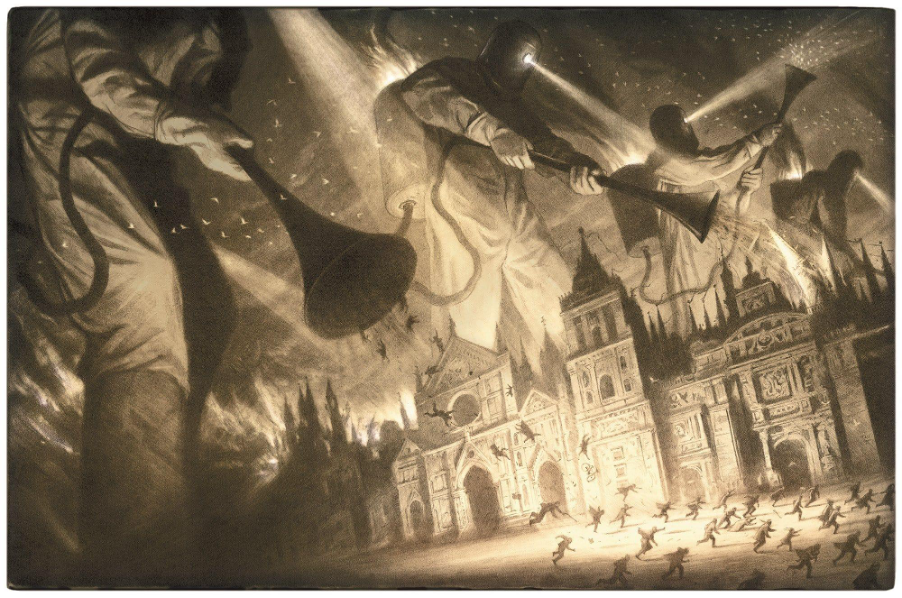
From The Arrival by Shaun Tan
Formatting a picture book
Author and Illustrator: The author and illustrator are joint authors. This means that they both play an equally important role in telling the story. We should be able to read the words alone OR look at the picture alone and understand the story in both instances.
Cover: canvas sweep (must entertain the reader / make them want to read the book).
Title page: it must be on the right-hand side of the book
title
names of two authors
publisher’s name
Verso (copyright page): copyright date, name of the authors, address of the publisher. This is on the left-hand side of book, immediately behind the title page
Dedication can be at the front or at the back of the book
important people in their lives
giving credit to those who have helped them
Blurb: at back of the book (unless the book has a dust jacket and then it is written inside the dust jacket). The blurb gives a summary of the book. Is a marketing tool. I will sometimes have quotes from a reviewer (i.e. newspaper review or another famous author who recommends it)
End papers (inside covers of the back and front)
can tell a story, can be symbolic, and is often used as a stimulus.
message must be subtle
foreshadowing
not just there for decoration (must be read as part of the P.B.)
Storyboard: the physical layout of the work.
Every page is set out differently to maintain interest
No two pages should look the same.
Pagination: 32 pages, but pages are never numbered.
climax of the story is always placed in the middle of the picture book.
![]()
![]()
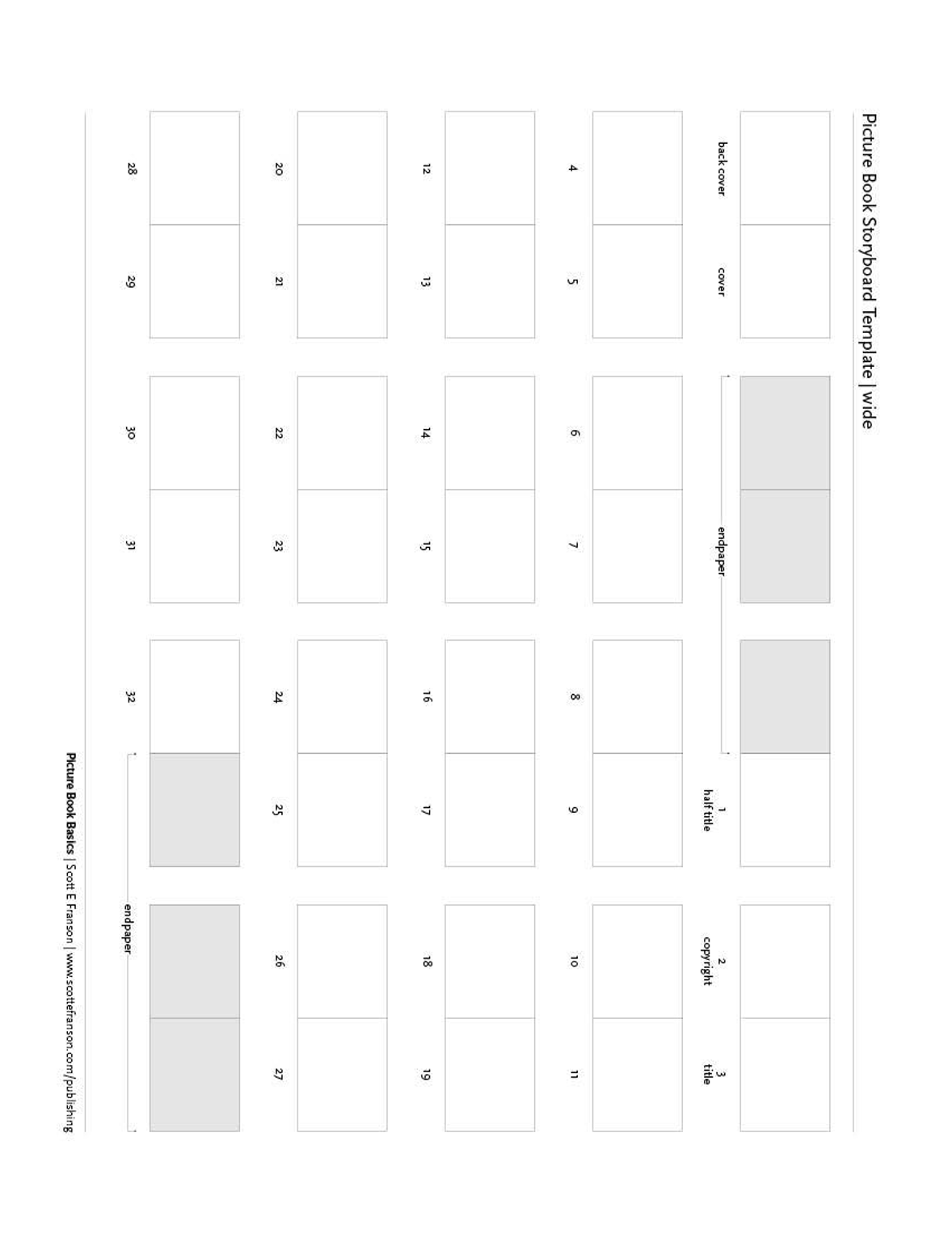
3. Visual Conventions: Symbolic Features
A symbol points to some meaning beyond itself. Consider a traffic light as ‘green’. In theory, the light could be purple, pink or blue. Yet, it is universally understood that ‘green’ symbolises that drives can ‘go’. A symbolic feature, therefore, will point to some meaning beyond itself.
Setting: Can communicate important background information. For example:
a). A graveyard at night with a full moon.
b). A tropical island at sunset.
Clothing and appearance contribute to an understanding of a person. For example:
a). Suit and tie
b). Ragged, dirty clothing
Color can shape moods or feelings. For example:
a). Warm colors: red, orange, yellow, etc.
b). Cool colors: blues, greens, and purples.
Warm colours like yellow, orange, and red can create a comforting and inviting atmosphere. They are often used in scenes meant to evoke feelings of love, family, and comfort.
Cool Colors: Cool colours like blue and green can create a calm, serene, or sometimes melancholic atmosphere. They might be used in scenes of reflection, tranquility, or sadness.
Body language—posture, gesture, stance, gaze—displays emotion, disposition, or manner. For example:
a). Hands on hips
b). Frowning
THINK: What mood/feeling is generated by the image below? How and why?
![]()

Objects: Objects and symbols can often have symbolic meanings in our society. Think about what these symbols and objects mean to you:
a). A skull?
b). A rose?
c). A sword?
Lighting: Lighting in picture books plays a crucial role in setting the mood and overall atmosphere, highlighting important elements, and guiding the reader’s emotional response.
Bright Lighting: Bright, well-lit scenes often convey positive emotions such as happiness, safety, and warmth. They can illustrate daytime settings, joyful moments, or safe environments.
Dim or Dark Lighting: Dim lighting can create a sense of mystery, suspense, or fear. It is often used for night-time scenes, moments of danger, or to convey sadness or loneliness.
Spotlighting: This technique involves using a concentrated light source to draw attention to a specific part of the illustration, such as a character’s face or a significant object. Spotlighting helps the reader understand what is important in a scene.
Contrast: High contrast between light and dark areas can highlight the central action or characters, making them stand out against the background. This can be particularly effective in dramatic or intense scenes.
Style: The specific artistic approach used in the illustrations, such as realistic, cartoonish, or abstract, affects the story's tone and emotional impact.
Colors and their meanings
![]()
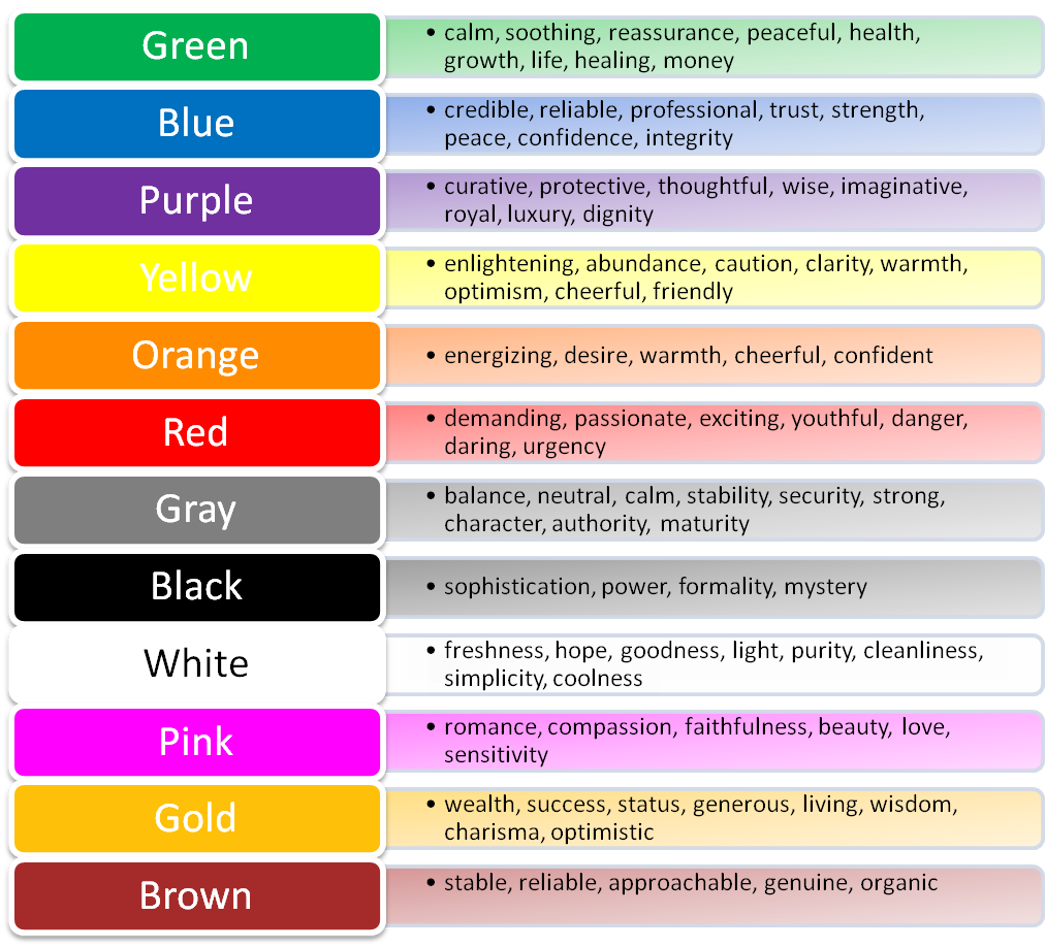
4. Visual conventions: Technical Features
Technical features refer to the variety of ways in which imagery is organised on the page. They help shape the way readers see and process pictures. Lines can help shape focal points.
Line: This Helps to split objects and can have significance too. There are different types of ‘lines, which can indicate different things.
Curves can indicate warmth and safety.
Jagged or sharp can indicate excitement, destruction, unease.
![]()
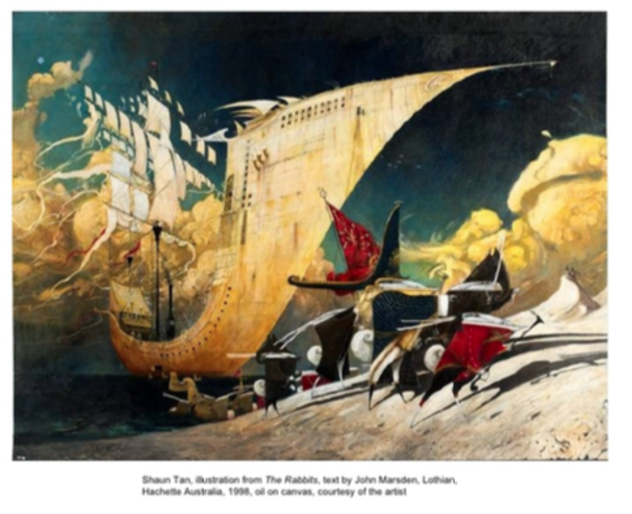
THINK: What is the effect of the strong curve of the ship in this instance?
Space helps shape focus and contributes to atmosphere. Space can also help create focus on specific objects.
literal use of space can communicate isolation and emptiness.
busy illustration can infer chaos, high activity and energy.
![]()
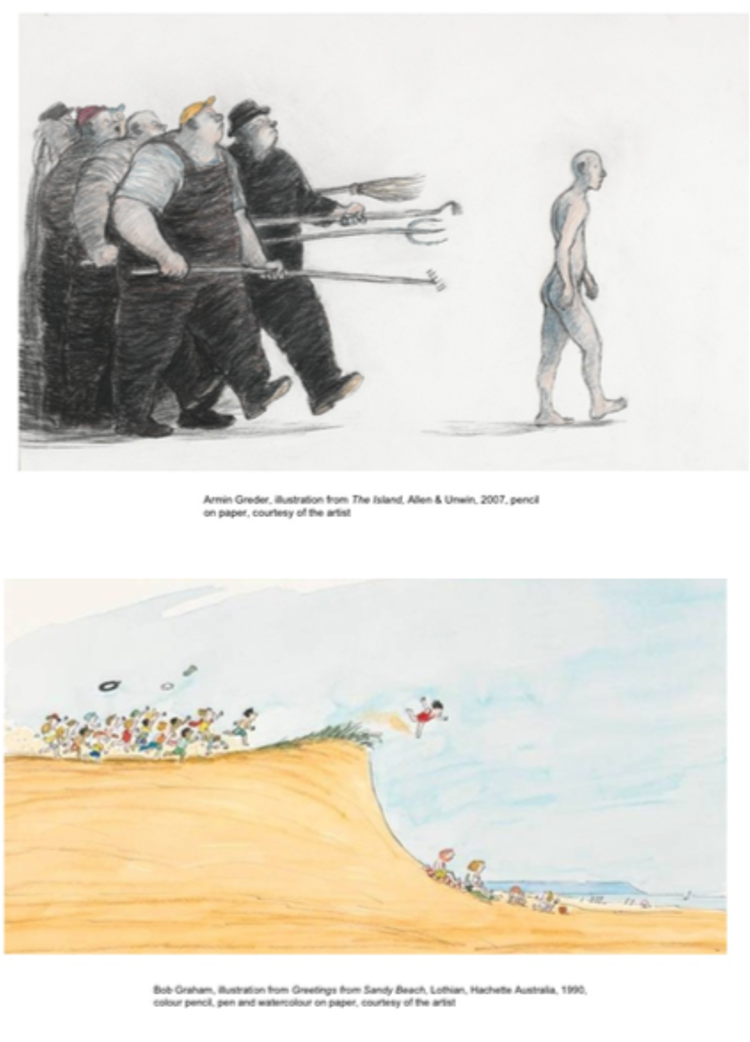
Think: What is the effect of space in these images?
Shape and Size allow viewers to perceive the relationship between objects.
Rounded: can create warmth and safety.
Angular: Can contribute to excitement and confusion.
The use of object/character size can convey different emotions.
Scale: reduction or increase of certain objects to give a sense of distance/dimension (can also be manipulated for effect).
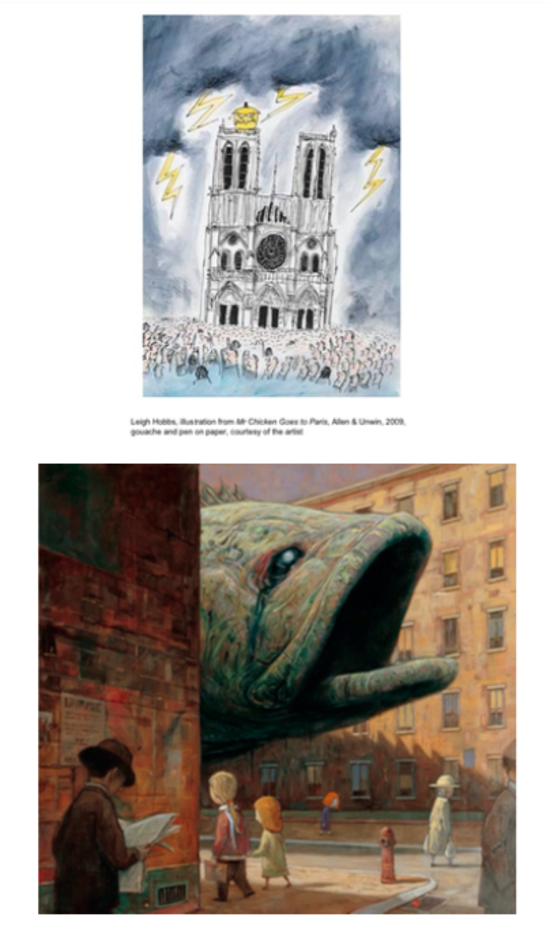
![]()
Balance can help show how different elements come together.
Unbalanced: Can create dominance/focus in one area.
Symmetry: create a sense of stability.
Asymmetry: generate a sense of chaos.(Asymmetry means things aren't the same on both sides)
Think: What is the effect of balance or imbalance in these images?![]()
![]()
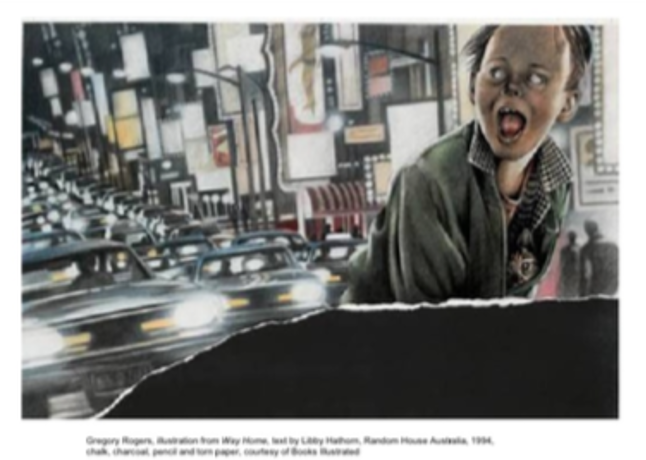
Proximity: Establishes a sense of closeness or distance to the subject matter.
Long distance: serve to establish a setting or make changes to it.
Medium/short distances: capture body language and emotion.
Close-up: captures emotion (facial expression, eyes, etc.).
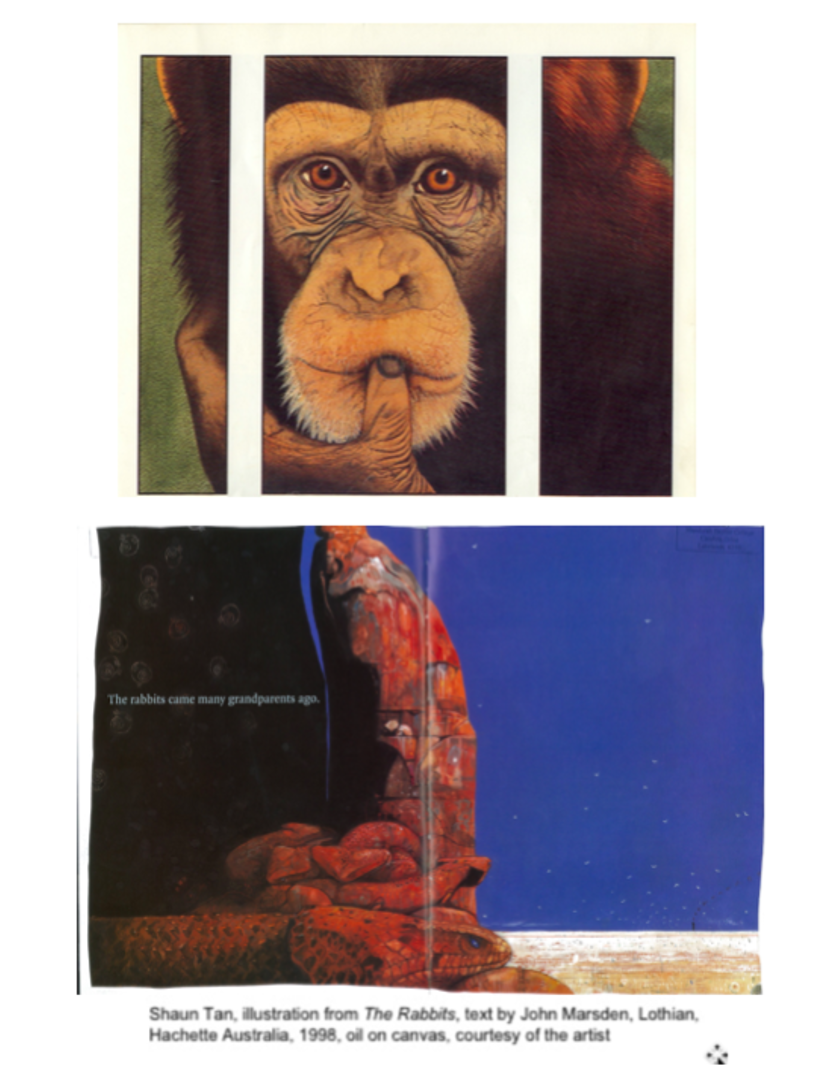
Written conventions
1. Text and Typography
Font Style and Size: Different fonts and text sizes can emphasize specific words or phrases, contribute to the story's mood, and make the text more engaging or easier to read.
Placement: The location of the text on the page in relation to the illustrations, which can create harmony or highlight specific aspects of the story.
Descriptive Language: Words and phrases that create vivid imagery and sensory experiences, helping readers visualse scenes and feel the story's emotions.
Dialogue: Conversations between characters, shown in the text, reveal their personalities and relationships and contribute to the plot.
Broader language features: e.g. rhyme, repetition, onomatopoeia, alliteration, etc.
7. Narrative conventions
![]()
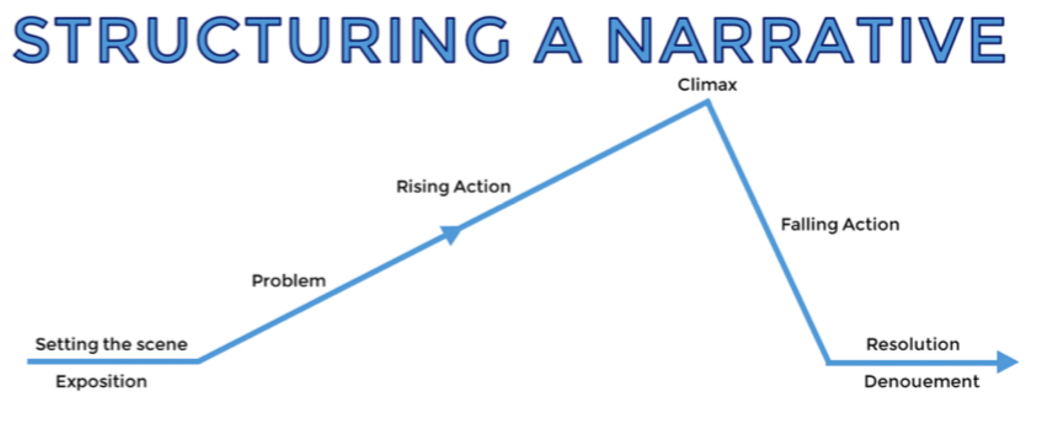
1. Setting: Where or when the story takes place.
Time setting
Place setting
Characterization: The distinctive features that construct a fictional character.
Protagonist / Antagonist
Appearance
Behaviour
Dialogue
Thoughts/feelings
Relationships and interactions with others
Plot development: The unfolding/sequence of a story.
Exposition: This is the foundation of the story. It's where we meet the characters, learn about the setting, and understand the basic situation. It's like the beginning of a story.
Composition: This is how the story is put together. It's like the architect's plan for the building. It includes how the characters interact, the plot unfolds, and the overall structure.
Climax: This is the highest point of the story, like the peak of the building. It's where the main conflict reaches its most exciting or intense moment.
Falling tension: After the climax, the tension starts to decrease. It's like the building starting to slope downwards. Things begin to calm down and wrap up.
Denouement: This is the end of the story, like the ground floor of the building. It's where loose ends are tied up, and we find out the final outcome.
Point of view: The narrator’s position in relation to the story being told.
First person
Second person
Third person
Themes, symbols and motifs
Theme: Main subject
Symbol: Place, person or object.
Motifs: Reoccurring elements.
7. Ideas, Issues, Values and Attitudes
Ideas: These are the beliefs that society holds at the time/place of the text’s setting. They are the spoken and unspoken rules about how people organise themselves as a society.
Issues: An important topic or problem for debate or discussion. (e.g., racism, discrimination, destruction of war, etc.).
Values: Are what individuals or groups think are important and hold to be of worth (e.g. justice, honesty, education).
Attitudes: Are the positions held or responses an individual group makes as a result of their values? For example, when honesty and justice are valued, an attitude towards stealing might be that anyone who steals should be sent to prison.